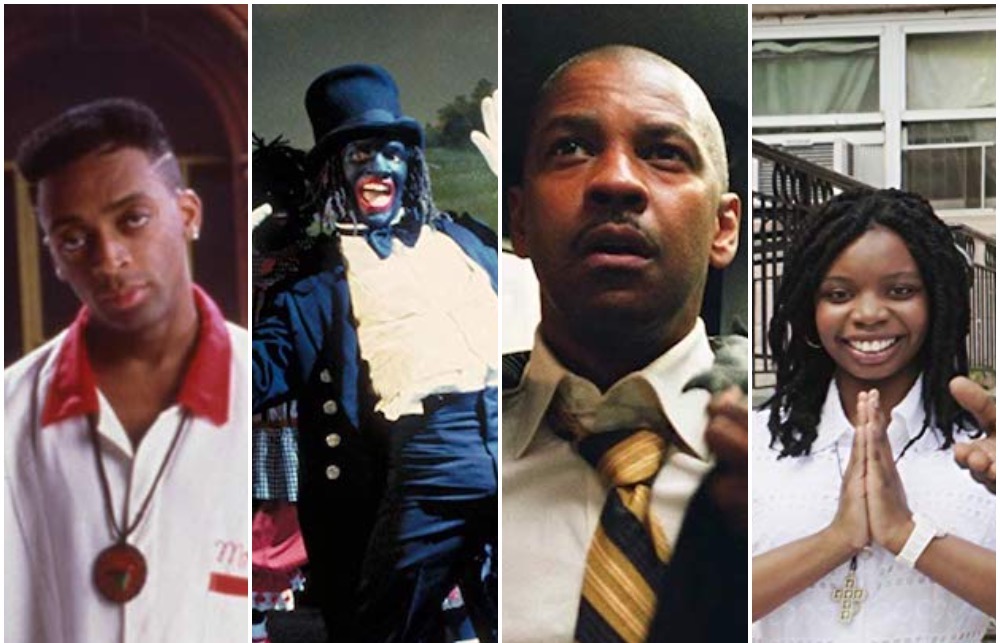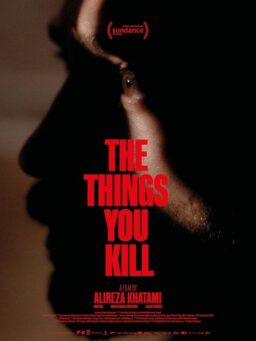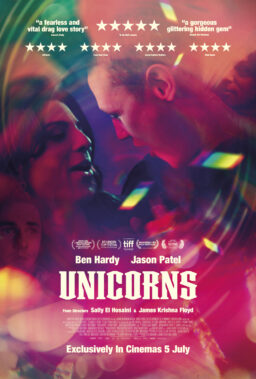This article is being republished in light of Spike Lee receiving the TIFF Ebert Director Award on Sunday, September 10th, at the Toronto International Film Festival’s TIFF Tribute Awards gala.
Spike Lee was one of those directors that Roger Ebert watched very closely. He didn’t just review his films, he followed the discussion around Lee’s work, and conducted many interviews with the filmmaker himself. Like many viewers of Lee’s movies, Roger sought to understand the passion and the anger with which Lee saw the world. The connection comes perhaps clearest in Roger’s 4-star review of “Malcolm X”: “Spike Lee is not only only one of the best filmmakers in America, but one of the most crucially important, because his films address the the central subject of race … Every Lee film is an exercise in empathy.”
On the occasion of Lee’s new film “Da 5 Bloods,” of which our staff writer Odie Henderson gave 4 stars, we’ve compiled all of Roger’s reviews of Spike Lee movies. Below, there are passages from five 4-star reviews and a couple Great Movies essays, along with a continual discussion about the power behind A Spike Lee Joint.
On February 12, 1988, Roger gave 3 1/2 stars to Lee’s “School Daze,” writing that it was “the first movie in a long time where the black characters seem to be relating to one another, instead of to a hypothetical white audience. He concluded the the review by saying it is “one of the most honest and revealing movies I’ve ever seen about modern middle-class black life in America.”

It’s safe to say that one of Roger’s most unforgettable viewing experiences in his life concerned seeing “Do the Right Thing” at its premiere at the Cannes Film Festival. While he wrote more about that in his Great Movies essay on the piece, he officially reviewed the movie back in June 30, 1989. Awarding the film 4 stars, the piece brought out some of Roger’s most passionate writing, especially with how the movie does not take a particular stance in its ideas of race and community, which reaches a tragic end one summer night in Bed-Stuy. Roger writes that the film “comes closer to reflecting the current state of race relations in America than any other movie of our time. […] I believe that any good-hearted person, white or black, will come out of this movie with sympathy for all of the characters. Lee does not ask us to forgive them, or even to understand everything they do, but he wants us to identify with their fears and frustrations.”
A year later, on August 3, 1990, Roger awarded 3 stars to Lee’s follow-up, “Mo’ Better Blues.” In the review, he states that the movie about a jazzman is “less passionate and angry than ‘Do the Right Thing,’ and less inspired, too.” The critic reasons that it’s like “second-novel syndrome,” regarding “the pressure on an artist to follow up a great triumph.” However, as someone who is clearly rooting for Lee even during his less cutting work, Roger reasons that it’s “not a great film, but an interesting one, which is almost as rare.”
Roger’s curiosity about Lee was especially active in how he tackled “Jungle Fever,” Lee’s 1991 movie about an interracial couple that starred Wesley Snipes and Annabella Sciorra. While Roger mentions in his 3 1/2-star review that he’s read interviews with Lee that discuss “Jungle Fever,” he seems more interested in unpacking everything around the relationship, of which he says “we never really believe the attraction they feel from one another.” In its own curious way, this is one of Roger’s less effusive reviews despite the score, concluding with: “The one area where it is least certain is jungle fever, which Lee uses as his starting point, and then leaves behind as quickly as possible.”

On November 18, 1992, Roger gave 4 stars to Lee’s “Malcolm X,” calling it in his opening sentence “one of the great screen biographies.” The critic added that “watching the film, I understood more clearly how we have the power to change our own lives, how fate doesn’t deal all the cards. The film is inspirational, educational—and it is also entertaining, as movies must be before they can be anything else.” He later wrote that “Spike Lee is not only one of the best filmmakers in America, but one of the most crucially important, because his films address the central subject of race. He doesn’t use sentimentality or political cliches, but shows how his characters live, and why.”
Two years later, Roger continued to be thrilled with Spike Lee’s storytelling, especially when it became personal with “Crooklyn.” Lee co-wrote the film with his sister Joie Susannah Lee and their brother Cinque Lee, leading to a script that Roger says in a 3 1/2-star review “contains the messiness of life.” And while the siblings stress that it isn’t a literal autobiography about growing up in Brooklyn in the early 1970s, Roger reasoned that “some of the scenes have the directness and pain of real memory.”
Lee continued to hold Roger’s attention with the 1995 crime movie “Clockers,” which was produced by Martin Scorsese and an adaption of Richard Price’s novel of the same name. In his 3 1/2-star review of the film, Roger wrote that “Lee has said that gun control and black-on-black crime are the two great unsolved issues facing African Americans. In ‘Clockers,’ these are his subjects.” He added that “‘Clockers is not a shriek of despair. Lee finds poetry and humor in all of his stories.”
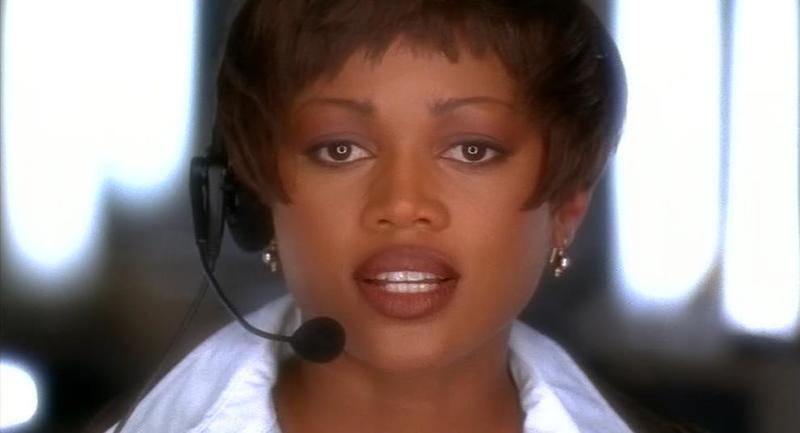
The first negative review Roger wrote about a Lee film happened with “Girl 6,” which he gave 2 stars. In a piece published on March 22, 1996, he wrote that “even though Spike Lee’s ‘Girl 6’ was written by a woman [Suzan-Lori Parks], it seems conceived from the point of view of a male caller.” Roger added: “Spike Lee is a great director, but his strong point is not leading expeditions into the secret corners of the female psyche.”
Just as Lee made “BlacKkKlansman” to mark the one-year anniversary of the tragedy at Charlottesville, he made “Get on the Bus” in 1996 to celebrate the Million Man March of 1995. In a 4-star review that was published on October 18, 1996, Roger wrote that the movie was “made in haste and passion, and that may account for its uncanny effect: We feel close to the real, often unspoken, issues involving race in America, without the distance the more time and money might have provided. […] What makes ‘Get on the Bus’ extraordinary is the truth and feeling that go into its episodes. Spike Lee and his actors face one hard truth after another, in scenes of great power.”
A year later, Roger gave 4 stars to “4 Little Girls” on October, 24, 1997, celebrating Lee’s documentary about the bombing of the 16th Street Church in Birmingham, Alabama on September 15, 1963. In a review that reflects upon the events but also the way that Lee depicts it in his heartbreaking film, Roger ends on a poignant note: “There is mostly sadness and regret at the surface in “4 Little Girls” but there is anger in the depths, as there should be.
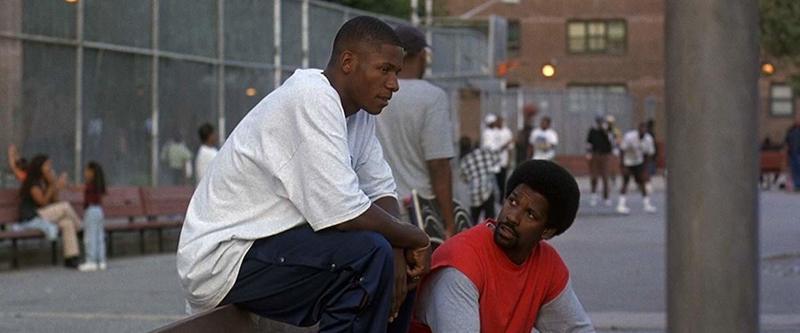
Lee returned to original screenplays with the 1998 film “He Got Game,” which also reunited the director with Denzel Washington. In a 3 1/2-star review, Roger wrote that “Spike Lee brings the spirit of a poet to his films about everyday reality … Lee uses visual imagination to lift his material into the realms of hopes and dreams.”
Roger gave 3 1/2 stars to Lee’s 1999 film, “Summer of Sam,” calling it “like a companion piece to Lee’s ‘Do the Right Thing.’” While the paranoid thriller about the summer of 1977 in New York City is “[Lee’s] first film with no major African-American characters,” Roger wrote the movie “vibrates with fear, guilty and lust. It’s not about the killer, but about his victims.”
On August 18, 2000, Roger awarded 3 stars to Lee’s stand-up concert movie “The Original Kings of Comedy,” documenting a stop at Charlotte, North Carolina. Of the four involved comedians—Bernie Mac, Steve Harvey, Cedric the Entertainer and D.L. Hughley—Roger said that Harvey is “the smoothest of the performers.”

For the second of his two negative Lee reviews, Roger gave 2 stars to “Bamboozled,” in a review that was published on October 6, 2000. For arguably one of Lee’s most polarizing movies in how it tackles images of black entertainers in TV and film by using blackface and other racist imagery, Roger chews on what he knows from both the film and conversations with Lee. “Lee’s comments are on target,” Roger writes. “But his film? I don’t think so.” He adds: “Blackface is so blatant, so wounding, so highly charged, that it obscures any point being made by the person wearing it. The makeup is the message … the power of the racist image tramples over the material and asserts only itself.”
In 2003, Roger returned to his status as champion of Lee with his 3 1/2-star review of “25th Hour,” published on January 10, 2003. But just six years later, Roger elevated the movie to Great Movie status with this essay, and went deeper into Lee’s craft. “Everybody knows that Spike Lee is an important filmmaker, but do they realize how good he is with actors, and how innovative he is with style?” In describing Lee’s value, he continues: “With Lee, as with any classical director, the emphasis is on the story and the people. But he’s always there, nudging us, being sure what we notice, moving his camera not merely with efficiency but with grace and innovation. Because he doesn’t go out of his way to call attention, how many realize what a master stylist he is?”
On August 6, 2004, Roger added his two cents to the discussion on one of Lee’s most provocative, possibly least-popular films: “She Hate Me.” He even starts off his 3-star review knowing the shape of the conversation: “‘She Hate Me’ will get some terrible reviews. Scorched earth reviews … Tomatometer will be down around by 20.” (Roger was off by one—as of this posting, it’s at 19%.) But so goes the legacy of Lee’s story about a heterosexual male (Anthony Mackie) who impregnates lesbians, a movie that Roger talks about seeing twice, and feeling engaged by it even if it has faults. Roger’s analysis of the review (“I could call [Lee] up and ask him [why he made it],” he asides) also sneakily has one of the most definitive sentences he ever wrote about Lee: “This is the work of a man who wants to dare us to deal with it.”

When Lee made one of his biggest (and one of his highest-grossing) movies, “Inside Man,” Roger gave the film 2 1/2 stars. In the review published on March 23, 2006, Roger curiously goes after the writer, Russell Gewirtz, saying that the screenplay “needs a few more runs through rewrite,” and that it “goes to much difficult to arrive at too little.” Still, the Lee factor excited Roger, writing that regarding character and race, “Lee finds so many interesting details that don’t involve the plot that we’re reluctant when he gets back to business.”
In 2008, Lee made “Miracle at St. Anna,” a World War II movie about four African-American soldiers behind enemy lines in Italy. Roger wasn’t the only person to note that it’s a movie that could have been cut down even more from the shape of its final cut, but he writes in his 3-star review that “the scenes I complain about are evidence of Lee’s status as an artist … They’re important to Lee, who must have defended them. And it’s important to me that he did.” He concludes this movie with something that could be applied to many of Lee’s films: “‘Miracle at St. Anna’ contains richness, anger, history, sentiment, fantasy, reality, violence and life. Maybe too much. Better than too little.”
On August 19, 2009, Roger gave another 4 stars to a Spike Lee film, the director’s filming of the Tony Award-winning Broadway production “Passing Strange.” In the review, Roger wrote that it was “one of the best musicals I’ve ever seen … one of Spike Lee’s best films.” When talking about Lee made this story of a rebellious young black man moving to Amsterdam in the 1960s, Roger wrote that “[Lee’s] work is the very model of how to record a live performance. […] With great skill and craft, he allows the material to speak for itself. He uses several cameras for many simultaneous angles, and with his editor, Barry Alexander Brown, seamlessly composes close-ups and longer shots to convey both character emotion and the exuberance of the choreography.”

The last film of Lee’s that Roger reviewed was “Red Hook Summer,” which provided a fitting type of conclusion to their relationship as critic and director, even though it wasn’t one of Roger’s favorites. In a 2 1/2-star review published on August 22, 2012, Roger notes how the movie was made on a small budget, and guerilla-style, just like Lee’s first feature, “She’s Gotta Have It”; the movie also brings back Lee’s character Mookie from “Do the Right Thing,” of whom Roger said he was happy to get a glimpse of. But while Roger notes the work that Lee continues to do with his actors, including a bishop played by Clarke Peters (who provides “the only outstanding performance” with his “fiery” sermons), the challenging nature of Lee’s storytelling is ever prominent. “Spike Lee has a feeling for these people … and he has a feeling for the neighborhood. Some of his scenes are strong in a free-standing way. I’m not sure what they add up to.” One can only imagine what a revisit to “Red Hook Summer” might have opened up for him.
To read all of RogerEbert.com’s reviews of Spike Lee’s films, including those by our contributors, click here. To read Odie Henderson’s 4-star review of “Da 5 Bloods,” click here

